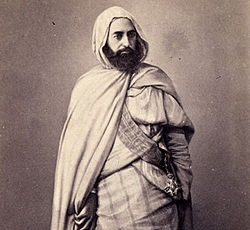
The exiled Muslim Algerian, along with his 1,000 volunteers, protected most of the diplomats and thousands of Christians during the 1860 Mount Lebanon civil war. He was awarded the highest decorations by European governments.
| Part of a series on |
| War (outline) |
|---|
 |
The armed forces of many nations have, at one time or another, used foreign volunteers who are motivated by political, ideological or other considerations to join a foreign army. [1] These may be formed into units of a given nationality or may be formed into mixed nationality foreign units. Sometimes foreign volunteers were or are incorporated into ordinary units. The practice has a long history, dating back at least as far as the Roman Empire, which recruited non-citizens into Auxiliary units on the promise of them receiving Roman citizenship for themselves and their descendants at the end of their service. [2]
Contents
- Mixed nationality units
- Historic
- Current
- Units by nationality
- American
- Albanian
- Bangladeshi
- Belgian
- British
- Bulgarian
- Bosnian
- Canadian
- Chinese
- Croatian
- Czech
- Danish
- Estonian
- Filipino
- Finnish
- French
- German
- Greek
- Indian
- Irish
- Israeli
- Italian
- Japanese
- Korean
- Moroccan
- Nepalese
- Polish
- Portuguese
- Rhodesian
- Russian
- Serbian
- Scottish
- South African
- Spanish
- Swedish
- Swiss
- Taiwanese
- Ukrainian
- Yugoslav
- See also
- References